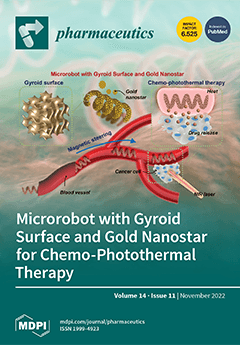The lack of safe and cost-effective treatments against leishmaniasis highlights the urgent need to develop improved leishmanicidal agents. Antimicrobial peptides (AMPs) are an emerging category of therapeutics exerting a wide range of biological activities such as anti-bacterial, anti-fungal, anti-parasitic and anti-tumoral. In the
[...] Read more.
The lack of safe and cost-effective treatments against leishmaniasis highlights the urgent need to develop improved leishmanicidal agents. Antimicrobial peptides (AMPs) are an emerging category of therapeutics exerting a wide range of biological activities such as anti-bacterial, anti-fungal, anti-parasitic and anti-tumoral. In the present study, the approach of repurposing AMPs as antileishmanial drugs was applied. The leishmanicidal activity of two synthetic anti-lipopolysaccharide peptides (SALPs), so-called 19-2.5 and 19-4LF was characterized in
Leishmania major. In vitro, both peptides were highly active against intracellular
Leishmania major in mouse macrophages without exerting toxicity in host cells. Then, q-PCR-based gene profiling, revealed that this activity was related to the downregulation of several genes involved in drug resistance (
yip1), virulence (
gp63) and parasite proliferation (
Cyclin 1 and
Cyclin 6). Importantly, the treatment of BALB/c mice with any of the two AMPs caused a significant reduction in
L. major infective burden. This effect was associated with an increase in Th1 cytokine levels (
IL-12p35,
TNF-α, and
iNOS) in the skin lesion and spleen of the
L. major infected mice while the Th2-associated genes were downregulated (
IL-4 and
IL-6). Lastly, we investigated the effect of both peptides in the gene expression profile of the P2X7 purinergic receptor, which has been reported as a therapeutic target in several diseases. The results showed significant repression of
P2X7R by both peptides in the skin lesion of
L. major infected mice to an extent comparable to that of a common anti-leishmanial drug, Paromomycin. Our in vitro and in vivo studies suggest that the synthetic AMPs 19-2.5 and 19-4LF are promising candidates for leishmaniasis treatment and present P2X7R as a potential therapeutic target in cutaneous leishmaniasis (CL).
Full article






